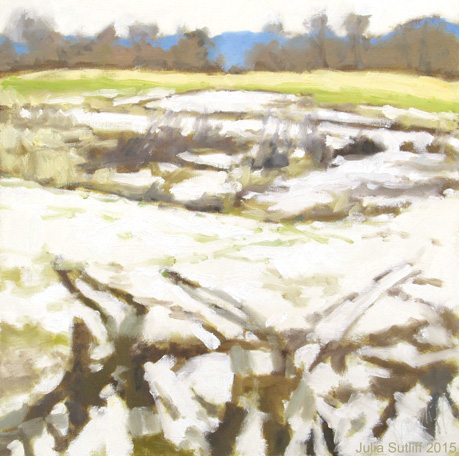Sometimes it seems less important to paint well than to be
able to determine what’s wrong, or what isn’t working, in a painting.
Same thing with writing: I’ve often felt that when it comes
to expressing myself in words, I’m a better editor than writer. Not long ago, however,
I read an article by master craftsman John McPhee about how writing IS editing. He put it this way: "The way to do a piece of writing is three or four times over, never once. For me, the hardest part comes first, getting something—anything—out in front of me. Sometimes in a nervous frenzy I just fling words as if I were flinging mud at a wall. Blurt out, heave out, babble out something—anything—as a first draft. With that, you have achieved a sort of nucleus. Then, as you work it over and alter it, you begin to shape sentences that score higher with the ear and eye."
Since then, I’ve felt a little less abashed about my muddy first drafts.
Since then, I’ve felt a little less abashed about my muddy first drafts.
Writing doesn’t work without editing, and painting doesn’t,
either. I often find myself an hour into a painting gazing at an image that
just doesn’t succeed in any way, but from long experience, I can sense that there
may be potential in it yet: that if I just make a slight change or two, it
will all come together and work confoundingly well. Other times, of course, I have to make major changes.
But the heart of the matter is knowing WHAT needs to be changed. (Or rather, suspecting: you never really know.) Also, you need to have the gumption to dive in and
change the parts that aren’t working even as you try to hold on to the good stuff.
Corot spoke of working “with confidence.” Confidence, and
hope, come into play in a big way at the moment you realize your painting has gone awry. It’s always tempting to give up entirely or to
convince yourself that what you’ve done so far can still work. I think that “how
to edit” may be the crucial skill you learn as you go on as a painter: how to
recognize problems when they arise, assess the damage, and then determine what
might work better.
You just never know at the outset of any piece what will
work for that particular composition/image/subject. You’re learning as you go each day,
and you need to learn fast—that is, by the end of your painting! So paint, then
assess, then paint, then assess. Try not to do too much assessing while you’re
painting. Constant second-guessing can get in your way.
In my rush to get done, I tend to have moments at the end of
a session when I’m able to take in the whole image at a glance. It’s as if one
minute I’m a clockmaker, drilling down on one gear, and the next I can pull
back and see how every piece connects. You may need to work long and hard to get there, but that moment is the very best time to tweak and pull each prodigal part into the fold.


